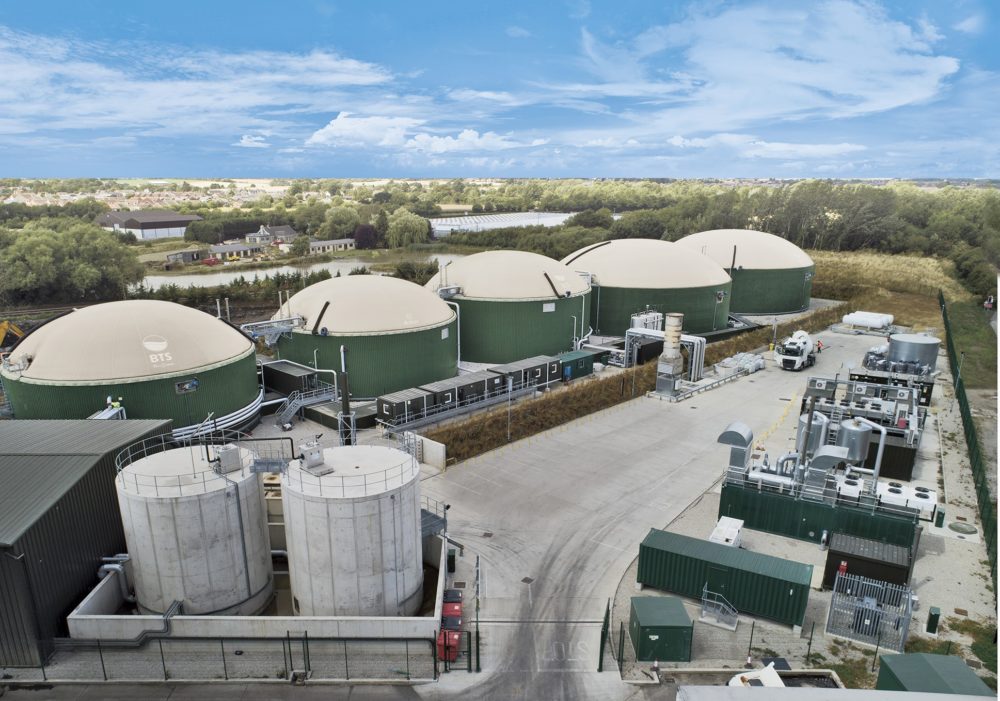Many people assume that we need bleeding-edge, ground-breaking technologies to address some of the biggest challenges in our food system. From water quality to alternative protein, companies are capturing billions of dollars in investment to develop new tools and techniques. Food waste has been an agritech investing darling, capturing more than $125 million in 2018 alone for technologies that help produce stay fresher longer, back-of-house food waste accounting software tools, and more.
But what if there are already viable, multi-faceted solutions to things like food waste sitting right under our nose? And what if it’s something as simple a giant replication of a cow’s four-chambered, bacteria-packed rumen?
“If you’d have asked me about three years ago about whether it’s hard to get investors excited about anaerobic digestion, I would have said yes,” Bioenergy DevCo CEO Shawn Kreloff told AFN. “Part of what we have been doing is educating the market and I believe the market has come around.”
The Maryland-based company recently raised $106 million from a new fund called Newlight Partners that spun out from the Strategic Investments Group at Soros Fund Management. The company develops anaerobic digestion facilities that create renewable gas and soil amendments by transforming organic waste that was otherwise headed for the landfill.
Organic waste is traditionally either incinerated and emitted as an environmental pollutant, or left in an already crowded landfill where it rots and releases methane, a harmful greenhouse gas that contributes to climate change. Anaerobic digestion, a cost-effective and environmentally-friendly technology, uses what the company describes as a proven natural microbiological process to break down organic waste materials and create renewable natural gas, which can either be injected into the energy grid where it burns cleanly or compressed as natural gas and used for transportation fuel.
“What we have built basically is a cow’s stomach on an industrial scale using the same bacteria as cows,” Kreloff explains. “The four-chambered stomach takes organic material through four series of processing with four sets of microbes that ends up with methanogenesis.”
The process also yields a ‘digestate,’ a soil amendment with the same organic and stormwater management capability as compost. The company has a variety of options for monetizing this resource including pelletizing it for potting soil or mixing it with sand to create topsoil.
In addition to fueling the completion of its first US facility in Maryland, the new capital will be used to help expand into other metropolitan areas.
Finding a home for these facilities proved challenging for Kreloff and the team. Although the technology is capable of killing more than two birds with one stone, the complexity also means that the facilities must be in close proximity to several key things: road and rail, a natural gas pipeline, sewer access, and a steady supply of organic matter to feed the giant, hungry beast.
“We are planning on putting our plants close to the source to help food processors save transport fees because we can process 100,000 tons of organic material per year on only five acres of land,” he explains. “And in the process, we allow these companies to check the sustainability box instead of just sending their food waste to a landfill.”
There are 2,611 landfills in the US, according to EPA data, with California boasting the most at 300. Tennessee comes in second with 129 and Texas third with 128. Although Kreloff sees major opportunities in California where there are several high-density metropolitan areas, California’s permitting process poses significant roadblocks.
“Education has been our biggest challenge, as well as finding five acres of land in a good spot. Permits are also an issue and California is a difficult place to build because of its permitting system. But these challenges are not insurmountable, particularly as states start learning about this and want to attract what we are doing,” Kreloff says.
The company is likely emboldened by its June 2019 acquisition of BTS Biogas, a European company that has built 220 anaerobic digestion plants across the continent. It operates 150 plants and is considered a pioneer in the industry for anaerobic digestion technology.
“Europe has a congested population and they don’t have landfills because of the congestion and lack of available land. They are also starved when it comes to natural resources compared to the US, so they started using this technology a long time ago to make their own fertilizer and then to make their own gas,” he explains. “I also think the European population tends to be more in tune with environmental issues than Americans, but Americans are catching up.”
Considering that the US generates an estimated 258 million tons of municipal solid waste every year, which includes things like food scraps, clothing, packaging, newspapers, batteries, and regular household trash, we really don’t have a choice. The US will run out of space for landfills within 17 years, according to a 2018 report by the Solid Waste Environmental Excellence Protocol (SWEEP) while the amount of waste produced is increasing.
“Honestly, when I started researching this I thought it was a win-win. I spent a lot of time in Europe, saw these plants, and as a technical geek found them really fascinating. I asked myself, ‘Why aren’t we doing this in the US?’ We are burying and burning all of this stuff and a lot of it has to do with people being set in their ways here. A lot of people don’t even know that this technology exists but once they learn about they say, ‘Why aren’t we doing this right now?’”




